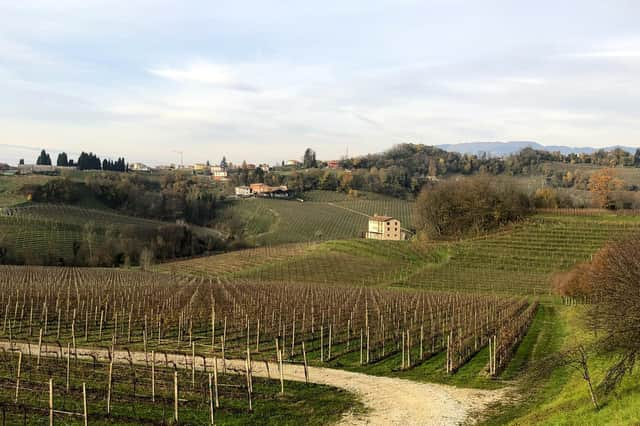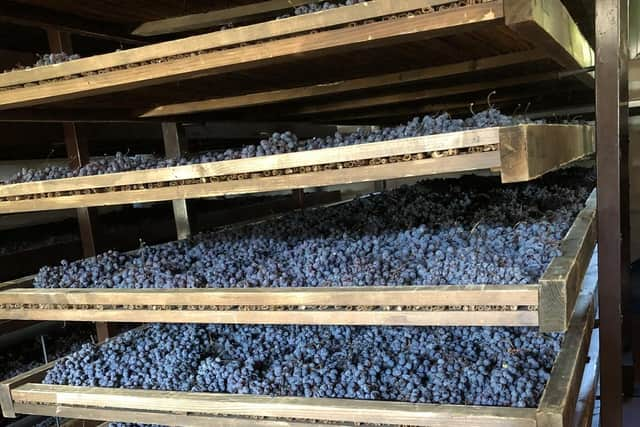Say goodbye to Dry January and hello to Amarone


At last, dry January is over and even if you don’t observe the rigours of abstinence in these first few weeks of the year, there are enough people who do to make opening a bottle seem almost sinful. Now we are into February, the weather is still cold and there is hearty food on the table, so opening a bottle of wine is a joy, not a sign of weakness.
This is the time to try an Amarone. Amarone della Valpolicella is the kind of wine that you never forget. It is powerful, full of rich, cherry fruit and dark, almost chocolatey tones that are particularly suited to drinking on cold winter evenings where it combines perfectly with well-flavoured meat and game dishes. The name Amarone also gives an indication of its style – hinting at its slight bitter edge (amaro) wrapped up in so much flavour that it is complex, not bitter.
Advertisement
Hide AdAdvertisement
Hide AdValpolicella may not be the first name you think of when you contemplate quality Italian wine. That’s because the name was devalued decades ago by overproduction of low-quality wine so now many of us think of ‘Valpol’ as a thin, cheap, acidic red to be knocked back with a bowl of pasta in the local trattoria.


Amarone is a completely different wine, made from grapes that have been allowed to dry to concentrate flavours. This is a historic way of making wine, probably from Roman times or even before, but drying grapes is not straightforward in the hills above Verona. This is not sunny Spain where grapes can be left to dry in sunshine.
Grapes for Amarone are picked at the usual harvest time. Some are picked as early as August, some slightly later, but every bunch must be whole and undamaged. Instead of being immediately made into wine, the bunches are taken to specialist drying lofts known as ‘fruitaio’ situated on hillsides to catch the breeze. They are laid on bamboo racks and stacked so that air constantly circulates around them.
Long before electricity and dehumidifiers helped in the process, these buildings were the only way to process the grapes. With doors on the south and north facing sides, air blows through the building, and dries the grapes. Heat is never used since this would cook the grapes rather than dry them. Now these fruitaio have become high tech. There is a constant noise as large fans circulate the air at the correct temperature and humidity to allow the grapes to desiccate slowly.
Advertisement
Hide AdAdvertisement
Hide Ad“The whole process is computer controlled, and takes the ambient conditions into account,” said Andrea Dal Cin, oenologist at Masi, one of the most important producers of Amarone. “We want the process to last around 90 to 130 days, to allow the right flavours to develop. This means that there are still racks of grapes in lofts at the start of the year following harvest.”
Drying the grapes does more than just concentrate the sugars and acids. The process switches on various genes within the fruit which give another level of complexity.
The region of Valpolicella stretches back into the hills behind Verona, spread across the valleys of Fumane, Marano, Negrar, Grezzana and Mezzane which run north south, like the fingers of a glove. Soils vary from the rich loam of the valley floors to almost pure white limestone on the hills.
The main grapes of this region are Corvina, Corvinone and Rondinella with the local university doing significant research into many old indigenous varieties. One of these, Oseleta, a variety with small tight bunches that was almost extinct in the 1970s is now being revived and replanted. Big pips and small berries give a low yield of juice which meant that in the past it was uneconomic but now it is recognised for its valuable contribution to the mix.
Advertisement
Hide AdAdvertisement
Hide AdDrying the grapes causes them to lose at least 30 per cent of their weight. When ready, they are taken to the winery and pressed to release the remaining juice which ferments slowly to give a deep-flavoured dry wine. This is aged in barriques or larger vats for at least two years. The alcohol level of Amarone is high, with a minimum of 14 per cent but can go up to a tongue-numbing 16.5 per cent in some wines. All Amarone keep well for several years, developing complexity and silkiness with time.
Because of the way it is made, Amarone has never been cheap, but increased production, and investment in technology means that it now appears on supermarket shelves at affordable prices. There will always be the top names who work traditionally and make exceptional wines but if you are new to this wine, then start in the supermarkets. Line up a bottle alongside a hearty beef casserole and start your taste adventure.
As the first step on this quality Valpolicella ladder, try Valpolicella Ripasso, made by adding some partially dried grapes towards the end of fermentation of a regular wine. This gives a kick-start to the fermentation and results in a more complex wine, a step towards Amarone, but lighter.
Finest Valpolicella Ripasso 2019, Tesco £11: Lighter than an Amarone, but only comparatively. This is a bold, dry, flavourful wine, with black cherries to the fore, backed by figs, raisins and a sprinkle of herbs.
Advertisement
Hide AdAdvertisement
Hide AdThe Best Amarone 2017, Morrisons £16: Terrific value for this rich complex wine, with black cherries, raisins, chocolate and a savoury earthiness that goes well with mushrooms.
Finest Amarone Valpolicella 2018, Tesco, £18: A medal winning wine with dark, bramble and cherry fruit, laced with balsamic notes and ending with silky tannins.
Corte Adami 2015, Amarone della Valpolicella, York Wines £25.95: A soft elegant style, with baking spice, dried cherries, chocolate and supple tannins.
Masi Costasera 2016, Amarone della Valpolicella Classico, £36.99 (£31.99 on a mix six deal) Majestic: Proper amarone, made from grapes that have been dried for several months then aged in large oak barrels for 30 months. Dark cherry aromas, layered with savoury, mushroom notes, hints of chocolate and spice. Perfect with game. This is delicious now, but it can age for another 20 years if you have the time.